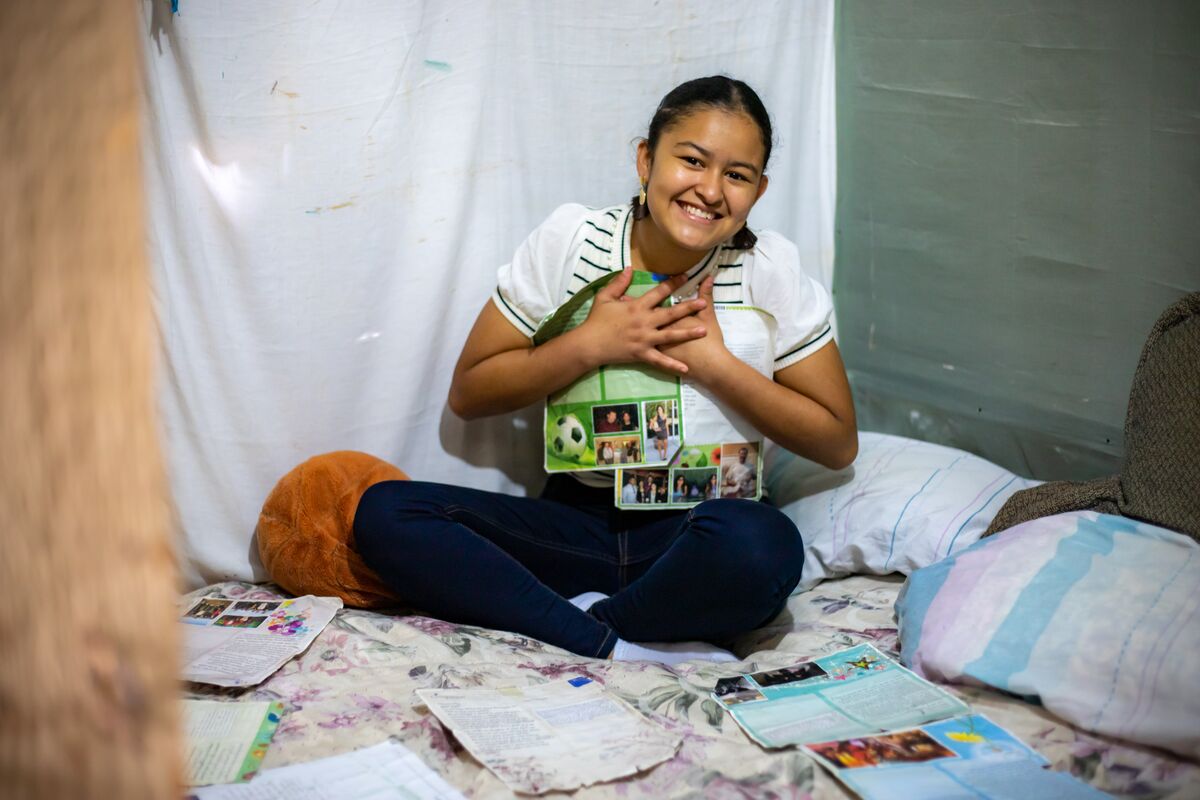Official Country Name: Republic of Honduras
Capital City: Tegucigalpa
Population: More than 10.4 million
Official Languages: Spanish
Life expectancy: Male 68 years, female 73 years
Population with access to safe drinking water: 84%
Infant mortality rate: 14 deaths / 1,000 live births
Percentage of children under the age of 5 underweight: 7.1%
Adult literacy rate: Male 88%, female 89%
Religion: Approximately 48% of the population are Protestant, 34% are Roman Catholic and 18% are of another/unspecified religion or none
Percentage living on less than $2.15 a day: 12.7%
CIA World Factbook, World Bank and 2022 Report on International Religious Freedom by the Office of International Religious Freedom, U.S Department of State
La Isla Española, later known as Hispaniola, was originally inhabited by Tainos Indians. Within three decades of European arrival in 1492, the Tainos deteriorated rapidly from disease and forced labour. Gradually, Spanish interest in Hispaniola declined as gold and silver were discovered elsewhere.
By the late 17th century, France gained control over the western third of the island and called their colony St. Domingue. The settlement became extremely lucrative, importing up to 40,000 Africans per year to work as enslaved people on the profitable sugar plantations.
St. Domingue was producing 60% of the world's coffee by the mid-18th century, which required even more slave labour. Those forced to work as enslaved people endured deplorable conditions. It is estimated that one in five died within the first three years of arriving in Haiti, while the average life expectancy for someone enslaved was 21 years.
In 1791, following the French Revolution, those enslaved in Haiti started a 12-year rebellion. Guerrillas were led by a formerly enslaved person named Toussaint L'Ouverture, who was eventually arrested by Napoleon's French army in 1801. The French were fully defeated in 1803, and Haiti declared independence in 1804.
Between 1843 and 1915, only one head of state served his full term out of 22 leaders. The rest were assassinated or forced into exile. The US sent troops in 1915 and occupied Haiti until 1934, forcing labour in groups called corvée (reminiscent of slavery).
Francois Devalier, known as Doc Devalier, was elected in 1957. He reigned with brutality, exploiting the population's belief in Vodou, and creating a police force called Tonton Macoutes. He left power to his 19-year-old son Jean Claude Duvalier, nicknamed "Baby Doc". Years of corrupt government and political upheaval continue to plague Haiti.
In 2010, a tragic 7.0 earthquake hit Haiti, killing 230,000. Haiti has since experienced devastating hurricanes and natural disasters; the economy continues to struggle amidst political unrest remains.
Art
Haitian artists make beautiful artwork out of objects that are destined to be discarded, such as old tin, which they cut into scenes of birds and flowers. Woodcarving and painting are also popular.
Music
Haitian music has both French and African influences, along with Spanish styles brought over from its neighbour, the Dominican Republic. American jazz has also influenced Haiti. The national dance is the méringue (similar to the Dominican version).
Language
Although both French and Haitian Creole are official languages in Haiti, French is often considered the language of the educated and Creole the language of the poorer, rural communities.
French: Bonjour (Hello), Comment-allez vous? (How are you?), Je m'appelle... (My name is...) Creole: Bonjou (Hi), Kòman ou ye? (How are you?), Mwen rele... (My name is...)
Sports and Games
Football is played year-round, and you’ll often find children using makeshift balls created from whatever they can find. Kites are popular, especially at Easter time. Children also like to play many versions of hide-and-seek.
Typical Foods
Haitians eat rice, beans, corn and bananas. Coffee is a popular drink.
The typical school year runs from February to November and education is compulsory for children between the ages of seven and 12.
There is some disparity in attitudes toward education between rural and urban areas. Education is seen as essential in many urban communities while in rural areas the need for children to work to support the family overshadows schooling. As a result, dropout rates in rural communities are higher.
More than half a million children of secondary school age do not go to school, accounting for one in two adolescents in lower secondary and two in three in upper secondary.
There are also many practical obstacles such as inadequate facilities and a lack of trained teachers. Many parents feel a sense of helplessness. Even those that desire for their children to get a good education, simply can’t access it.
Source: UNICEF
Approximately 48% of the population are Protestant, 34% are Roman Catholic and 18% are of another/unspecified religion or none.
Religious freedom is a fundamental right in Honduras and there is no state religion. Under the country’s constitution, religious leaders are not allowed to hold public office or make political statements. Religious organisations may register as legal entities to qualify for tax-exempt status and other government benefits.
Public education is secular and religious education is not taught in government schools. In private schools, however, it is permitted as part of the curriculum and some private religiously affiliated schools require students to participate in religious events to graduate. Various religious organisations, including the Roman Catholic Church, Seventh-day Adventist Church, and evangelical Protestant churches have all set up schools in the country.
There are a number of inter-faith groups within Honduras working to promote understanding and collaboration between those of different faiths.
Statistics from the International Religious Freedom Report, released in 2022 by the Office of International Religious Freedom, U.S. Department of State
